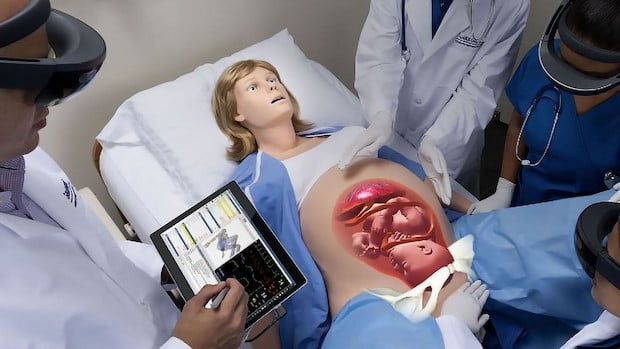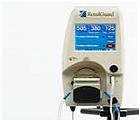Over 3.6 million babies are born in the United States each year. Despite how common it is for new children to be born, many new parents and even healthcare providers struggle with it.
Childbirth is a complicated and potentially dangerous process. While mom and dad do everything to prepare for their newborn’s arrival, the skilled medical professionals are those who help make the miracle of childbirth happen. Given all the bustle and noise that a newborn experiences in its first few minutes, it’s understandable why babies cry when they come out. Women also have to deal with a number of changes after childbirth, which can create a lot of stress and discomfort.
To guarantee that newborns arrive with healthy screams, modern technology came up with childbirth simulators to teach midwives how to properly react through the whole process. These devices simulate the human body physically and occasionally robotically to prepare medical workers for childbirth.
What Is the Purpose of a Birth Simulator?
The modern birthing simulators on the market are high-tech, anatomically-realistic patient models to be used in healthcare simulation that simulates a woman going through delivery. They come in a variety of different models that mimic natural birth, Caesarean delivery, and other methods. Most basic simulators include a pelvis, birth canal, cervix, and baby with replaceable parts. This configuration enables learners to see certain fundamental phases in the delivery process.
These special simulators range in complexity from a straightforward static model in which the operator manually maneuvers the infant through the delivery canal to a highly complicated model that is completely automated and can deliver a baby with different configurations. They are helping change the American way of giving birth.
Why Are Birth Simulators Important?

The Dangers of Childbirth
The reality is that a lot may go wrong during childbirth. In the 18th century, women had a 1 in 8 probability of dying after delivery. Childbirth was made more terrifying for the ordinary pregnant mother by birth problems such as postpartum haemorrhaging, infections, and other issues.
And these aren’t simply yesterday’s problems. During the past few decades, hospitals around the world were frequently seeing an increase in maternal deaths. According to recent research, the majority of women who give birth in a hospital encounter some sort of delivery-related issues.
Birth Simulators – The Essential Training Tool for Midwives
No medical professional would choose to carry out their first delivery in such a high-risk circumstance given the amount at stake. But unfortunately, there was no other choice for centuries. The development of modern birth simulators allowed medical professionals to practice births without endangering the lives of mums-to-be. With improvements in electrical components, virtual forceps, and other features, these simulators replicate the complete labour process from beginning to end.
Without endangering either the mother or the baby, simulation gives teams and individual healthcare professionals the chance to practice caring for a woman and her newborn. To make the simulation experience as realistic as possible, many of the manikins are operated remotely by a technician with guidance from an instructor. This gives midwives the chance to experience making autonomous judgments in many real-world scenarios.
Not every simulator is pricey and complicated. Some of them are quite helpful simple simulations and come with a reasonable price tag. The majority of tabletop models simulate standard childbirth scenarios, as well as unexpected delivery difficulties through which both medical students and professionals can learn a lot.
Childbirth Simulators in Medical Schools
Modern birth simulators are extremely advanced devices that present students with a variety of potential issues. Simulators are used in medical schools all across the world to teach students, and more institutions are investing in high-tech simulators to complete their training programs. These tools give them a hands-on experience through which they can learn much more than from an ordinary textbook.
It’s difficult to refute the value of using a birth simulator; after all, practice makes perfect. Given that many medical schools are using the technology, most medical schools believe that the expense of simulators is worthwhile given the greater safety of mother and child.
Simulators Provide a Realistic Depiction of Serious Childbirth Complications
Simulators for childbirth can simulate difficult labours, complicated deliveries, and postpartum emergencies. For example, they’re able to mimic a woman who labours for hours with comorbid conditions like diabetes or high blood pressure (eclampsia). They mimic complications such as shoulder dystocia (in which the baby’s shoulder becomes caught on the mother’s pubic bone), newborns with low Apgar ratings, and placenta abnormalities. To construct different case studies, you can alter the cervix’s opening and the time of birth.
Certain simulators can mimic potentially fatal postpartum complications including bleeding or cardiac arrest. Given that many dangerous birth-related issues are rare, staff members have little opportunity to practice with emergencies of this nature. However, the modern, high-tech birthing simulators enable obstetricians, midwives, nurses, and other medical professionals to practice life-saving situations. Teams may practice communication and teamwork on these simulators that recreate actual births. The most common reason for medical errors is often a lack of communication.
A Birth Simulator Helps Practice Important Delivery Skills
Modern high-tech simulators allow you to observe how manual interventions impact the foetus. Here is a list of delivery skills that a simulator may help you develop:
- Standard vaginal delivery.
- Normal placenta and umbilical cord delivery.
- Evaluation of the foetal position and presentation.
- Identification of all typical and atypical positions and presentations of the foetus (such as facial features, neck, or brow) to indicate easy and difficult births.
- Foetal manipulation inside the womb.
- Management and presentation of shoulder dystonia.
- Breech births (including complete, footling or incomplete, and frank breech presentation).
- Detecting foetal fontanelles feature.
- Placenta birth.
- Placenta previa demonstration: whole, partial, and marginal.
- Prolapse of the umbilical cord.
- Nuchal umbilical cord.
- Caesarean delivery involving an incision.
- Artificial membrane rupturing.
- Umbilical cord clamping and cutting.
- Suctioning of baby’s mouth and nose.
- Manoeuvres, such as the Leopold’s, Pinard’s, Maurice-Smellie-Veit, the Prague and Woods manoeuvre.
- Rubin.
How to Choose the Right Birth Simulator?
The learning objectives and learner level dictate what type of manikin you should buy. A high-end manikin isn’t necessary for every hospital or healthcare teaching facility, nor can they all afford to pay the incredibly high amount of money required to purchase one. For instance, some nursing schools hardly cover obstetrics, therefore they may benefit from simpler, less expensive models that can accurately simulate labour and delivery. Lastly, although these simulators provide the technology, students and medical staff should first and foremost rely on educational theory and technique.
Conclusion
Using simulation training, both students and medical staff gain practical experience in labor and delivery in a safer and risk-free setting. Realistic simulation training has several advantages, including improved patient safety and improved learning. Simulation has a lot of potential as a means of promoting competence, and comfort with delivery procedures.
Tagline: Birthing simulators can be very helpful for preparing parents and healthcare professionals for childbirth.







